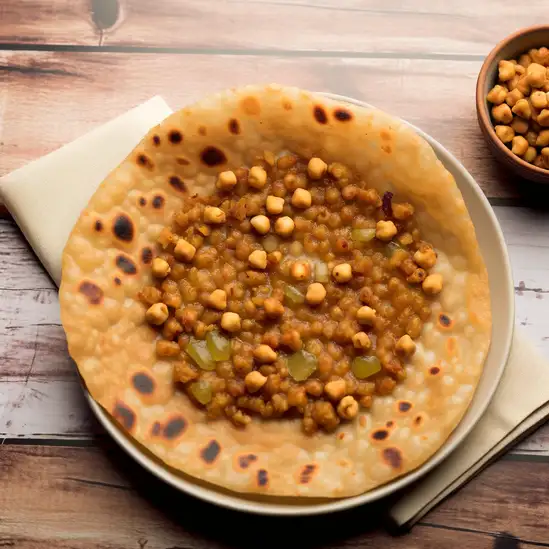



If you ever find yourself craving a blend of vibrant culture and serene landscapes,Nashik Division is where you want to be. The moment you step into this part of Maharashtra,there’s a gentle hum in the air—a mix of temple bells,bustling markets,and the soft rustle of grapevines swaying in the breeze. It’s a place where ancient traditions meet the fresh pulse of everyday life,and you can feel that balance in every corner. Walking through Nashik’s streets,you’ll catch the scent of spices mingling with the earthy aroma of vineyards. Yes,vineyards! Nashik is often called the ‘Wine Capital of India,’ and tasting the local wines while overlooking endless rows of grapevines is an experience that stays with you. But it’s not just about wine; the city’s rich history seeps through its temples and ghats along the Godavari River,where pilgrims gather in quiet reverence,creating a peaceful yet lively atmosphere. What really makes Nashik Division special is its warmth—the people are welcoming,eager to share stories over a cup of chai or a plate of spicy misal pav. The festivals here,especially the Kumbh Mela,bring an energy that’s both spiritual and celebratory,filling the air with chants,colors,and a sense of togetherness. Whether you’re wandering through ancient ruins,savoring fresh street food,or simply soaking in the sunset over the hills,Nashik invites you to slow down and savor life’s simple,beautiful moments.
The information on this page is currently being reviewed by Tripkliq and should be used as a guide only
Eng word: Hello
Eng pronunciation: Namaskar
Local language: नमस्कार
Eng word: Goodbye
Eng pronunciation: Niroop
Local language: निरोप
Eng word: Thank you
Eng pronunciation: Dhanyawad
Local language: धन्यवाद
Eng word: How much
Eng pronunciation: Kiti
Local language: किती
Eng word: Toilet
Eng pronunciation: Shauchalay
Local language: शौचालय
Eng word: Help me
Eng pronunciation: Madat Kara
Local language: मदत करा
Eng word: Yes
Eng pronunciation: Hoy
Local language: होय
Eng word: No
Eng pronunciation: Nahi
Local language: नाही
Eng word: Excuse me
Eng pronunciation: Maaf Kara
Local language: माफ करा
Nashik is believed to be the place where Lord Rama, Sita, and Lakshmana spent a significant part of their exile as described in the Indian epic, Ramayana. Panchavati, a prominent area in Nashik, is named after the five banyan trees that are said to have existed during their stay.
Nashik is one of the four cities in India where the grand Kumbh Mela is held every 12 years. This massive religious gathering is rooted in the legend of the Samudra Manthan (churning of the ocean) and the fight for the nectar of immortality.
The Trimbakeshwar Temple, located near Nashik, is one of the twelve Jyotirlingas of Lord Shiva. It is a revered pilgrimage site and is also the source of the sacred Godavari River, often referred to as the 'Ganga of the South.'
The Pandav Leni Caves, dating back to the 1st century BCE, are a group of ancient rock-cut caves that served as Buddhist monasteries. These caves showcase intricate carvings and inscriptions, reflecting the rich cultural heritage of the region.
Nashik played a significant role in India's independence movement. The city was the site of the Nashik Conspiracy Case (1909), where revolutionary Anant Kanhere assassinated British officer Jackson, marking a pivotal moment in the struggle for freedom.
Nashik is often referred to as the 'Wine Capital of India' due to its favorable climate for grape cultivation. The city is home to several vineyards and wineries, making it a popular destination for wine tourism.
The Godavari River, which flows through Nashik, is considered one of the holiest rivers in India. The Ramkund in Nashik is a sacred bathing ghat where devotees perform rituals and immerse ashes of their loved ones.
Anjneri Hills, located near Nashik, is believed to be the birthplace of Lord Hanuman, a revered deity in Hindu mythology. The serene hills are a popular trekking and pilgrimage destination.
The Coin Museum in Nashik is the only museum of its kind in India. It showcases a vast collection of coins, molds, and artifacts, offering insights into India's numismatic history and the evolution of currency.
In Nashik Division, the most common Power Adaptor is Type C, Type D, Type M.







A steamed savory cake made from fermented rice and chickpea batter, typically served with green chutney.

A popular street food consisting of a spicy potato fritter (vada) sandwiched between a bread bun (pav), often served with chutneys.

A sweet flatbread stuffed with a mixture of jaggery and split yellow gram, typically enjoyed during festivals.

A thick, unleavened flatbread made from various flours, often served with ghee and spicy chutneys.

A traditional dish made from a variety of lentils and spices, often served with rice.

A spicy curry made from sprouted lentils, served with bread rolls (pav) and topped with onions, lemon, and sev.

A multi-grain flatbread made with a mix of flours and spices, often served with butter and yogurt.

A savory snack made from gram flour and fresh coriander, steamed and then shallow-fried until crispy.

A dish made from tapioca pearls, cooked with peanuts, potatoes, and spices, often consumed during fasting.

A stuffed flatbread filled with spiced mashed potatoes, usually served with yogurt and pickles.
Imagine stepping into a city that pulses with energy,where every street corner hums with life and stories waiting to be discovered—that’s Mumbai for you. The moment you arrive,you’re wrapped in a vibrant tapestry of sounds:the rhythmic clatter of local trains,the lively chatter of street vendors,and the distant call of temple bells blending with honking rickshaws. The air carries a mix of spices from roadside stalls,mingling with the salty breeze from the Arabian Sea,creating an intoxicating scent that’s uniquely Mumbai.
Walking through its bustling lanes,you’ll see a kaleidoscope of colors—bright saris fluttering in the wind,intricate colonial architecture standing proudly beside sleek skyscrapers,and street art that tells tales of the city’s soul. Mumbai’s character is a beautiful contradiction:it’s fast-paced yet welcoming,chaotic yet deeply rooted in tradition. The city’s heartbeat is its people—dreamers,artists,and entrepreneurs who wear their resilience and warmth like a badge of honor.
And then there’s the food—oh,the food! From the tangy,spicy street-side vada pav that feels like a warm hug,to the rich,aromatic biryanis and fresh seafood by the sea,every bite is a celebration of flavors. Mumbai invites you to lose yourself in its maze of neighborhoods,each with its own rhythm and charm,promising moments of surprise and connection. It’s not just a place to visit; it’s a city that stays with you long after you’ve left.
If you find yourself wandering through Pune Division,you’ll immediately notice a unique blend of old-world charm and youthful energy buzzing in the air. The city feels alive,not in a chaotic way,but like a well-loved book you can’t put down—full of stories,colors,and aromas that invite you to explore deeper. As you stroll through its bustling streets,the scent of freshly brewed chai mingles with the earthy fragrance of monsoon-soaked soil,while the distant hum of classical music from a nearby temple adds a soothing soundtrack to your day.
Pune’s character is a beautiful dance between tradition and modernity. You’ll see centuries-old forts and temples standing proudly alongside vibrant cafes and art galleries. The locals,warm and welcoming,carry a quiet pride in their rich Marathi culture,which you can taste in the spicy,tangy flavors of street food like vada pav and misal pav. The city’s parks and tree-lined avenues offer peaceful respites,where you can watch students and artists sketching or friends sharing stories over steaming cups of coffee.
What truly makes Pune special is its spirit of learning and creativity. It’s a city that encourages curiosity,whether you’re wandering through the lively markets,attending a music festival,or simply sitting in a cozy bookstore. Visiting Pune feels like stepping into a place where history and innovation coexist,wrapped in a warm,inviting embrace that makes you want to stay just a little longer.
Imagine stepping into a place where the sun kisses your skin,the salty breeze carries the laughter of beachside chatter,and every corner hums with a laid-back yet vibrant energy—that’s North Goa for you. It’s a lively patchwork of golden sands,swaying palms,and colorful shacks where the aroma of sizzling seafood mingles with the faint scent of frangipani flowers. Whether you’re wandering through the bustling markets of Anjuna or watching the sun dip behind the waves at Calangute,there’s a rhythm here that feels both timeless and alive.
What really makes North Goa special is its blend of cultures and carefree spirit. You’ll find Portuguese-influenced architecture standing proudly alongside lively street art,while the music—from mellow acoustic sets to pulsing electronic beats—drifts through the air,inviting you to join in. The locals,warm and welcoming,add a genuine charm that makes you feel like you’re part of a big,sun-soaked family.
And the flavors! Freshly caught fish grilled with spices that tease your taste buds,tangy Goan curries,and sweet,creamy feni that’s perfect for toasting to new adventures. As night falls,the beach transforms into a playground of bonfires and music,where stories flow as freely as the ocean breeze. North Goa isn’t just a destination; it’s a feeling—a place that stays with you long after you’ve left.
If you ever find yourself in Gujarat,don’t miss out on Surat — it’s a city that hums with energy and warmth,like a close friend welcoming you home. The moment you step into Surat,you’re greeted by the lively buzz of markets where vibrant textiles and sparkling diamonds catch your eye,reflecting the city’s rich heritage and modern flair. The air carries a mix of spices and fresh street food aromas,tempting you to dive into the local flavors. It’s a place where tradition and progress dance together effortlessly.
Walking through Surat’s streets,you’ll hear the chatter of merchants,the clinking of bangles,and the rhythmic calls of street vendors selling everything from piping hot kachoris to sweet jalebis that melt in your mouth. The city’s warmth isn’t just in its climate but in its people — friendly,proud,and always ready to share a story or a smile. There’s a genuine sense of community here,where festivals light up the nights and the riverfront offers a peaceful escape from the city’s vibrant pulse.
What makes Surat truly stand out is its blend of old and new — ancient temples and bustling textile mills coexist with sleek shopping malls and innovative diamond cutting centers. It’s a city that invites you to slow down,savor the moment,and soak in the colors,sounds,and tastes that make it uniquely alive. Trust me,Surat isn’t just a stop on your trip; it’s an experience that stays with you long after you leave.
If you find yourself wandering through Ahmedabad,you’ll quickly realize it’s a city that hums with a unique rhythm—part ancient charm,part vibrant modernity. The moment you step into its bustling streets,you’re greeted by a kaleidoscope of colors:the bright saris fluttering in the breeze,the intricate patterns of traditional textiles,and the lively markets where spices perfume the air with a warm,earthy aroma. There’s a palpable energy here,a blend of old-world heritage and youthful creativity that makes every corner feel alive.
Walking through the narrow lanes of the old city,you’ll hear the chatter of shopkeepers,the clatter of chai glasses,and the distant call of temple bells. The architecture is a feast for the eyes—ornate havelis with carved wooden balconies,majestic stepwells that whisper stories of centuries past,and the striking pols,those tightly-knit neighborhoods that pulse with community spirit. It’s a place where history isn’t just preserved; it’s woven into daily life.
And then there’s the food—oh,the food! From the tangy street snacks like khaman and fafda to the rich,buttery thalis served in cozy eateries,every bite bursts with flavor and tradition. Ahmedabad’s warmth isn’t just in its climate but in its people,who welcome you with genuine smiles and an eagerness to share their culture. Visiting here feels like stepping into a living tapestry,where every sight,sound,and taste invites you to slow down and savor the moment.
If you ever find yourself craving a place where time seems to slow down and every corner whispers stories of royalty and romance,Udaipur is where you want to be. Walking through its narrow lanes,you’re greeted by the gentle lapping of lake waters and the soft clinking of boat oars,setting a rhythm that feels both peaceful and alive. The city’s shimmering lakes,especially Lake Pichola,mirror the sky and the ornate palaces that rise like dreams from the water’s edge,making you feel like you’ve stepped into a living painting.
The air carries a mix of fragrant spices from bustling markets and the sweet scent of marigold garlands,while the distant sound of traditional Rajasthani music floats through the evening breeze. Udaipur’s charm isn’t just in its stunning architecture but in the warmth of its people,who greet you with genuine smiles and stories that make the city’s history come alive. Sitting by the lakeside,sipping on a cup of masala chai,you can watch the sunset paint the City Palace in hues of gold and pink — it’s a moment that stays with you.
What makes Udaipur truly special is its blend of old-world elegance and vibrant local life. From savoring rich,spicy Rajasthani thalis to exploring art-filled havelis,every experience feels intimate and rich with culture. It’s a place that invites you to slow down,soak in the beauty,and leave with a heart full of memories and a longing to return.
Fraudulent agents or websites may advertise fake hotels or guesthouses, taking advance payments and leaving tourists stranded.
Tourists may be sold fake or low-quality items, such as jewelry, handicrafts, or religious artifacts, at inflated prices.
Scammers may approach tourists claiming to represent charities or orphanages, asking for donations that never reach the intended cause.
Fraudulent agents sell fake pilgrimage or spiritual tour packages, promising exclusive access to holy sites but failing to deliver.
Scammers pose as tour guides and offer to show tourists around, charging high fees for subpar or incomplete services.
Restaurants or street vendors near tourist spots may charge tourists significantly higher prices than locals for food and beverages.
Drivers may overcharge tourists by taking longer routes or claiming fixed rates that are much higher than normal.
Tourists may be charged exorbitant fees for taking photos at certain locations or of local people, even when no official fee exists.
Thieves use distractions, such as street performances or staged arguments, to steal wallets, phones, or valuables from tourists.
Scammers near temples may pressure tourists into making 'mandatory' donations or purchasing overpriced offerings for rituals.
The use, possession, sale, and distribution of narcotic drugs and psychotropic substances are strictly prohibited under the Narcotic Drugs and Psychotropic Substances Act,1985. This applies to Nashik Division as well. Violations can result in severe penalties, including imprisonment and heavy fines. Tourists are advised to avoid any involvement with illegal drugs.
Smoking in public places is prohibited in Nashik Division, as per the Cigarettes and Other Tobacco Products Act (COTPA),2003. Public places include government buildings, hospitals, educational institutions, public transport, and restaurants. Designated smoking areas may be available in some hotels and larger establishments. Violators may face fines.
Vaping is banned in India, including Nashik Division, under the Prohibition of Electronic Cigarettes Act,2019. The sale, manufacture, import, export, transport, storage, and advertisement of e-cigarettes are prohibited. Possession or use of vaping devices can lead to penalties, including fines and imprisonment.
What are other people saying about Nashik Division?
Recent Social posts about Nashik Division
There is nothing to show you for now.